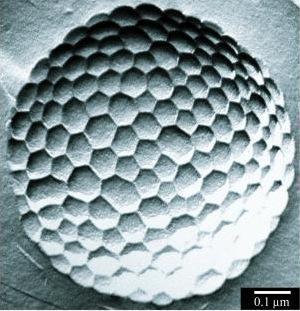Engineers from the School of Engineering and Applied Sciences at Harvard University produced, for the first time, sustainable nanobubbles - bubbles that were stable for more than a whole year * among the possible applications the applications - for the introduction of nanoparticles into the cosmetics industry

With the help of home mixers, engineers from the School of Engineering and Applied Sciences at Harvard University produced, for the first time, sustainable nanobubbles - bubbles that were stable for more than a full year - from a collection of frothers of a mixture of glucose syrup, sucrose stearate and water. Their research was published in the May 30 issue of the respected journal Science.
The research, led by Howard Stone, grew out of a conference lecture on foams given by Dr. Rodney Bee, a retired physical chemist from Unilever in 2005. Bee, who was testing ice cream recipes at the commercial company, was interested in finding Ways to extend the shelf life of foams and other gas-containing mixtures such as ice creams. He managed to create a unique type of bubbles during his research, and included their image in his lecture.
Stone, a professor of engineering and applied mathematics, was in the audience when Bee presented the image of a micrometric bubble with a highly regular polygonal geometry. On the surface of the bubble were visible irregular areas of pentagons, hexagons and heptagons which together formed a football-like structure. None of the wigs exceeded fifty nanometers in size. "Bubbles of such small sizes never extended life due to the surface tension of their surface - they collapsed and disappeared almost immediately.
The image that appeared on the screen at this conference was extraordinary,” says Stone. "It was impossible; We all believed that it was not possible at all." Small bubbles have more surface tension and higher internal gas pressure than larger bubbles. As a result, larger bubbles are usually obtained at the expense of small ones, which have an extremely short life span. "I asked him how he was able to create his foam, and he replied that he used an ordinary household blender. The next day I went and bought such a mixer for our labs," explains Stone.
In a study conducted in collaboration with the scientists of the commercial company, it was discovered that when the bubbles were coated with a very specific mixture of surfactants, these crystallized above the bubble and formed an almost impenetrable shell. The resulting shells have sufficient flexibility that allows them to curve and arrange themselves in stable structures. The measurement of the stability time of these microbubbles exceeded over a year and their structural integrity was maintained throughout this period. The researchers note that future applications of such microbubbles could significantly improve the shelf life of common foamed products that undergo rapid degradation, such as those used in cosmetics and contrast agents for medical imaging.

One response
Avi:
Following Eden's message, you deleted the version in which all the comments entered so far (Rami's, Eden's, and yours) and clicking on the links to these comments causes a 404